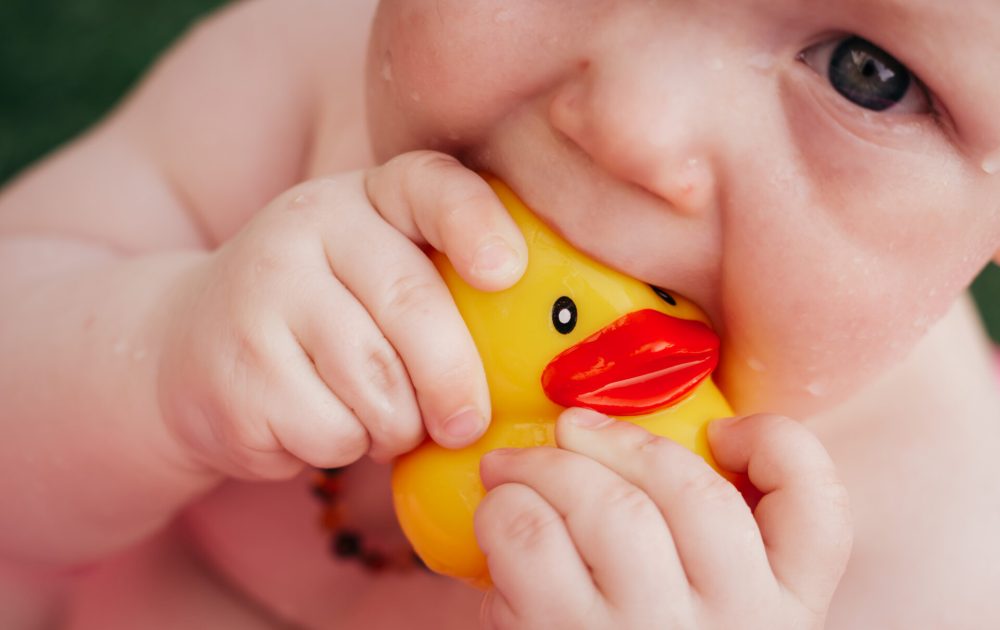Our test tells you which everyday chemicals you've recently come into contact with, and easy steps you can follow to reduce your exposure to them.
How safe are the chemicals used in children's toys?

We usually place our trust in manufacturers to make toys that are safe for infants and children to play with, but in 2022 toys were top of the list of dangerous product alerts in the European Union – a staggering 22% of all safety alerts were for toys. A survey carried out by the British Toy & Hobby Association found a similar level of unsafe toys, especially those purchased at online marketplaces.
The main reason that toys have safety alerts at such high levels is usually due to concerns about usage and suitable for play, but toy manufacturers and sellers are coming under increasing scrutiny for material safety. The list of substances either restricted or banned for use in toy manufacture is already quite long, and includes some types of PFAS and BPA, but there are 1000’s more chemicals used to manufacture toys that are permitted that many experts think should be banned. One study titled Chemicals of concern in plastic toys found 126 chemicals of concern in toys that included phthalates and bisphenols that could potentially harm children’s health. Researchers identified the need for a “mouthing exposure model” as this is the most common method that children are exposed to chemicals in toys.
In March 2024 the European Parliament approved proposals to extend the Toy Safety Directive which sets out the requirements for toys to keep children safe from harm. These proposals strengthened existing rules governing the use of harmful chemical substances in the manufacturing process of children’s toys, extending them to include endocrine disrupting chemicals (EDCs) such as more types of BPA and PFAS. These restrictions, if approved, would expand the existing regulations which ban carcinogenic, mutagenic or toxic for reproduction chemical use in toy manufacture. But in May 2024, the European Council rejected the proposal to extend the ban to EDCs and so the debate about chemicals used to make toys continues.
UK Toy Regulations generally lag behind Europe and haven’t been updated since 2011, despite calls from politicians and parents. For example, since the UK left the EU, the EU have restricted or banned 46 chemicals vs only one in the UK. The UK toy industry itself is slow to catch up with concerns about the potentially toxic effects of exposure to some chemical groups still used in toy manufacturing, both here and abroad. For example, the British Toy & Hobby Association Guidance on buying toys makes no mention of chemical substance safety.
What are the potential health effects of exposure to plastic toys for children?
Infants and children are at risk of exposure to the same levels of environmental pollutants as their parents, and that includes their toys. Their tendency to put things into their mouth increases the risk of chemicals released by plastics being ingested. Children are especially susceptible to these chemical substances because body organs that control detoxification are immature and still developing; they are especially at risk during sensitive periods of development and rapid growth when their bodies are already working at fast pace. Changes in hormonal messaging within the endocrine system can adversely affect the functions of other growing organs, especially the brain.
Most plastics rely on phthalates to make them more flexible, and they’re widely found in toys. Because phthalates are not strongly bound within plastic materials they can leach out, into food and potentially by handling and mouthing of toys combined with saliva, risking the possibility of ingestion; this is the main route of exposure. Exposure to phthalates appears to be higher in children than adults and adolescents. Phthalates can have have endocrine disrupting effects, so they are known as endocrine disrupting chemicals, or EDCs.
Bisphenols are also known as EDCs due to their ability to mimic the effects of oestrogen. Bisphenols are used to harden plastic and make it more durable, so they are used to make toys. Early childhood exposure to BPA has been linked to later behavioural problems. BPA and BPS have been linked to childhood obesity and studies have linked the chemicals to fertility issues, diabetes, impaired brain development and some cancers.
To read more about the harmful effects of chemicals on children’s brains read CHEMTrust’s No Brainer report.
Confidence about choosing toys and other daily items for children
- Choose soft toys made from organic cotton and other natural fibres.
- Search for toxic free toys, but check the product claims. Some wooden toys may still use chemicals to treat wood, or to stain and paint.
- Check product labels or ask manufacturers about materials used to produce toys.
To find out more about creating an environment for children with fewer pollutants visit our news section which includes advice on clothing, play activities, and chemical free gardening.
Image credit Vizbara